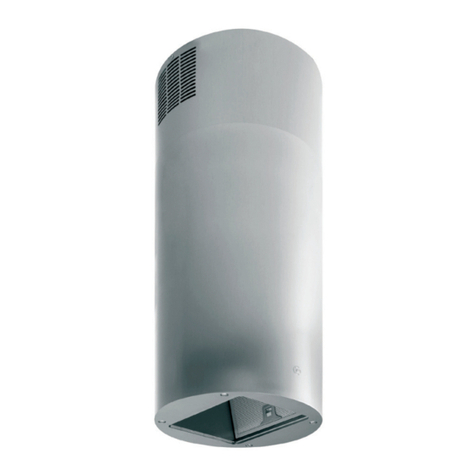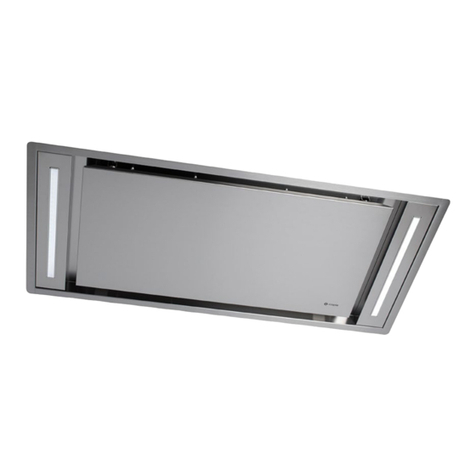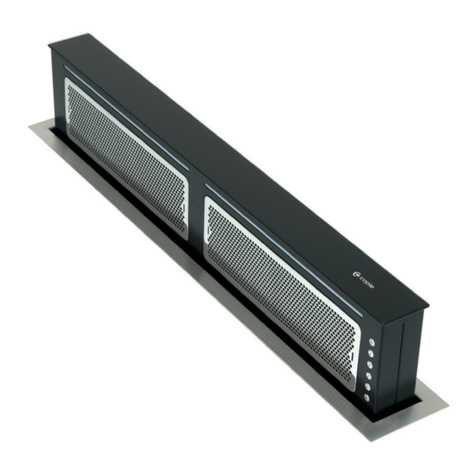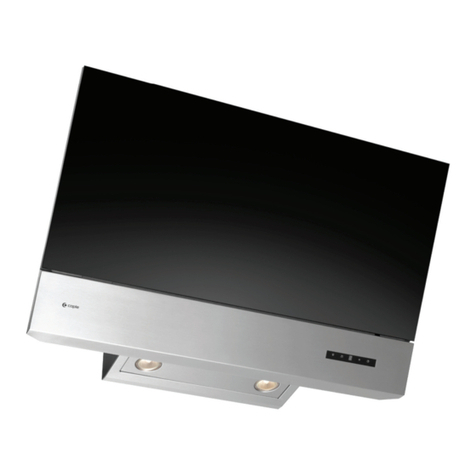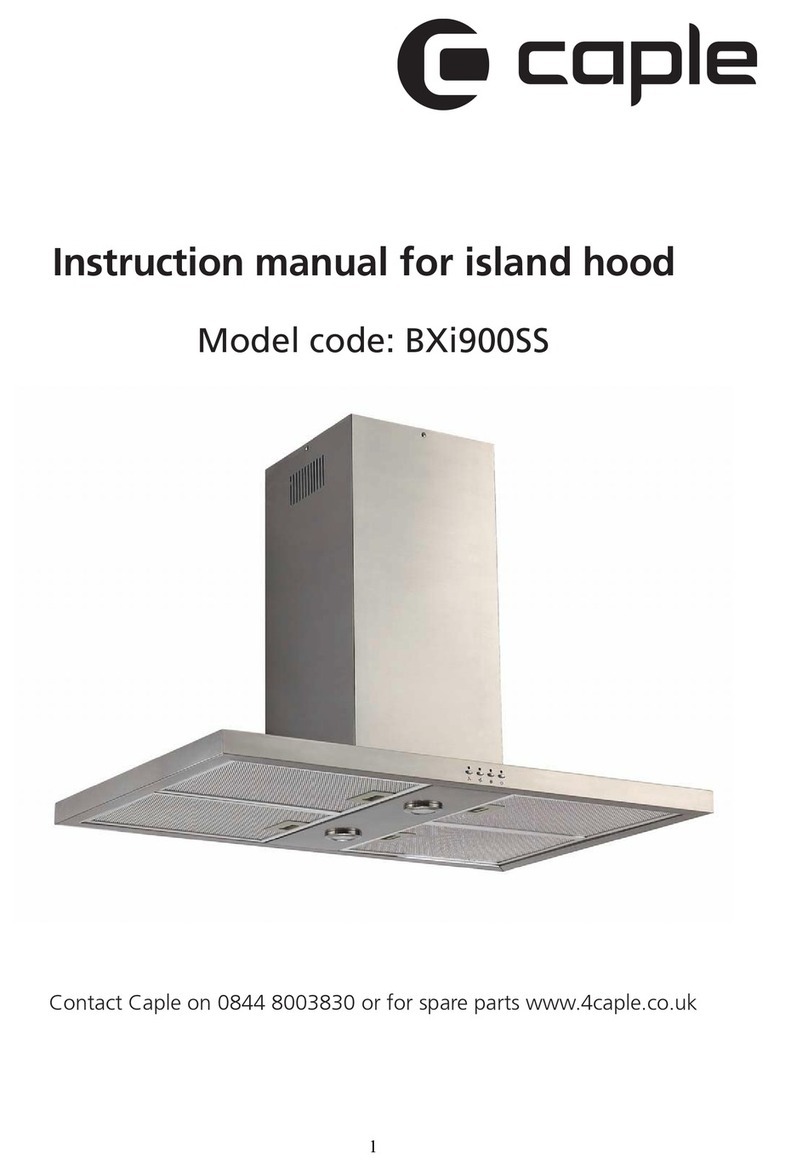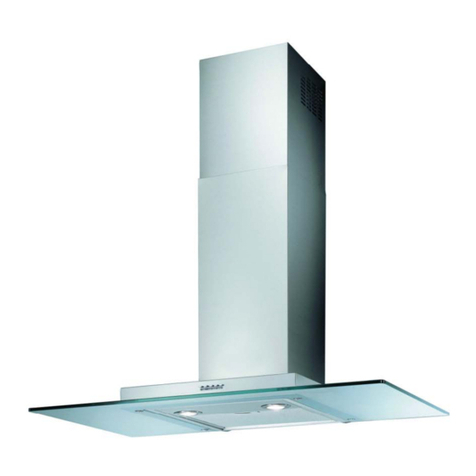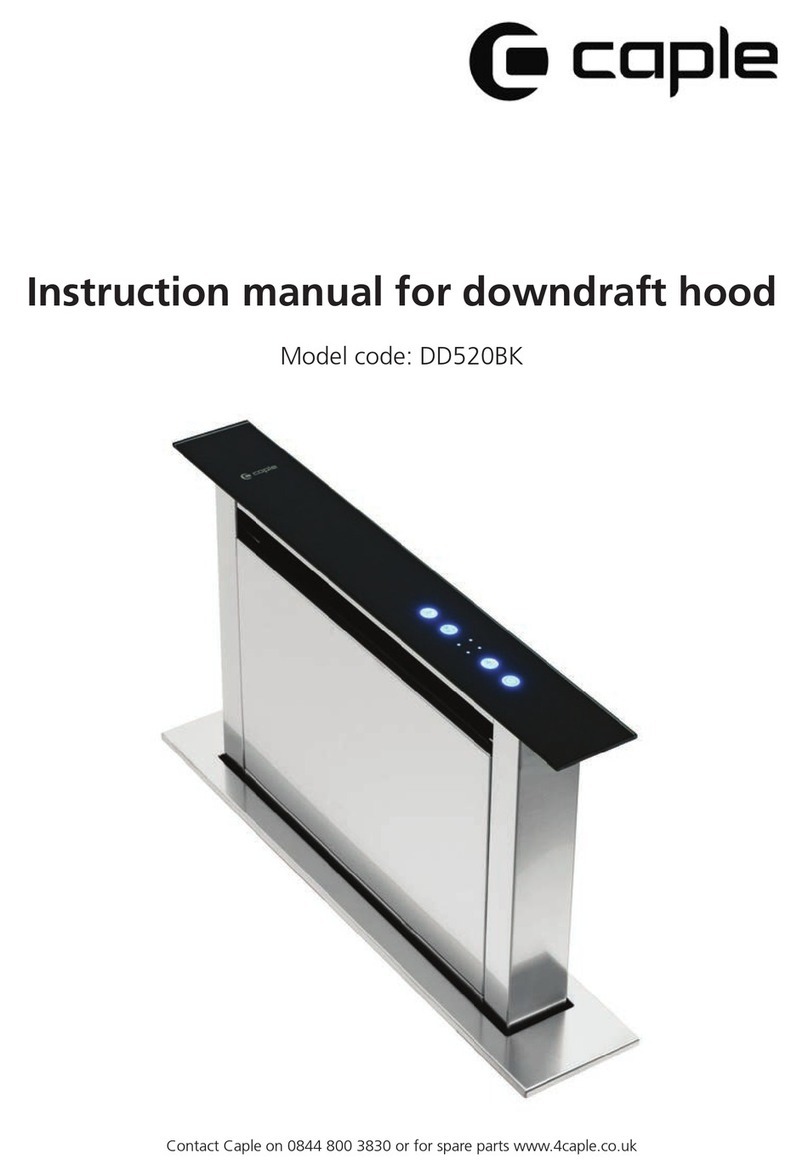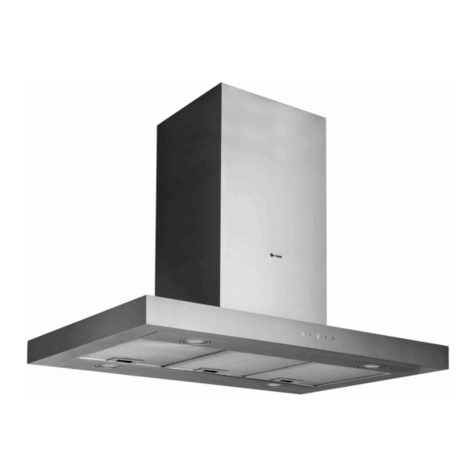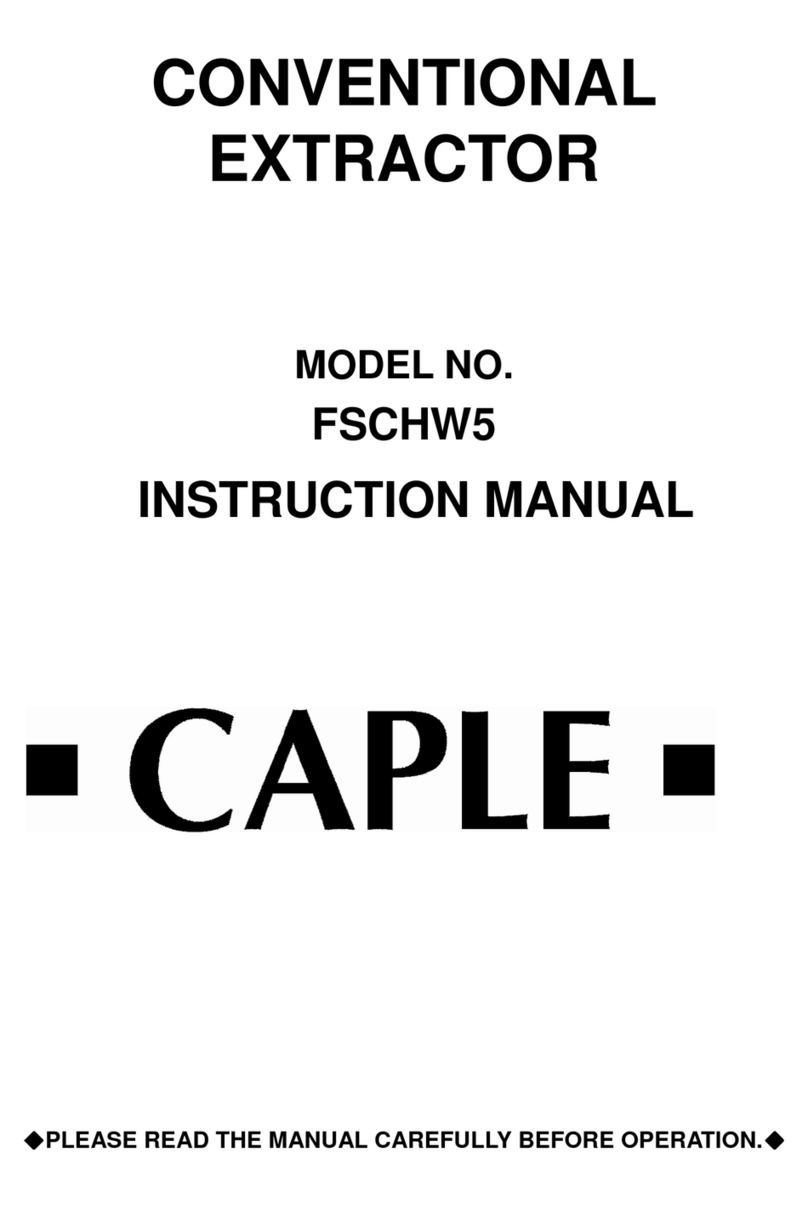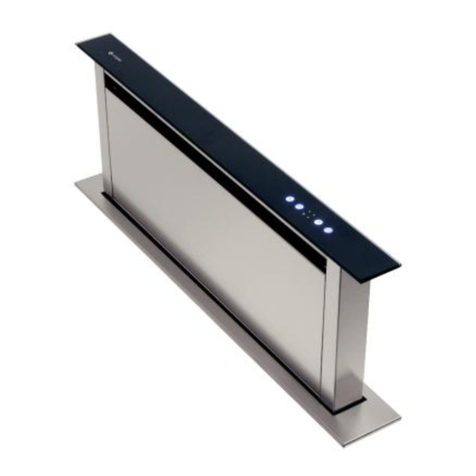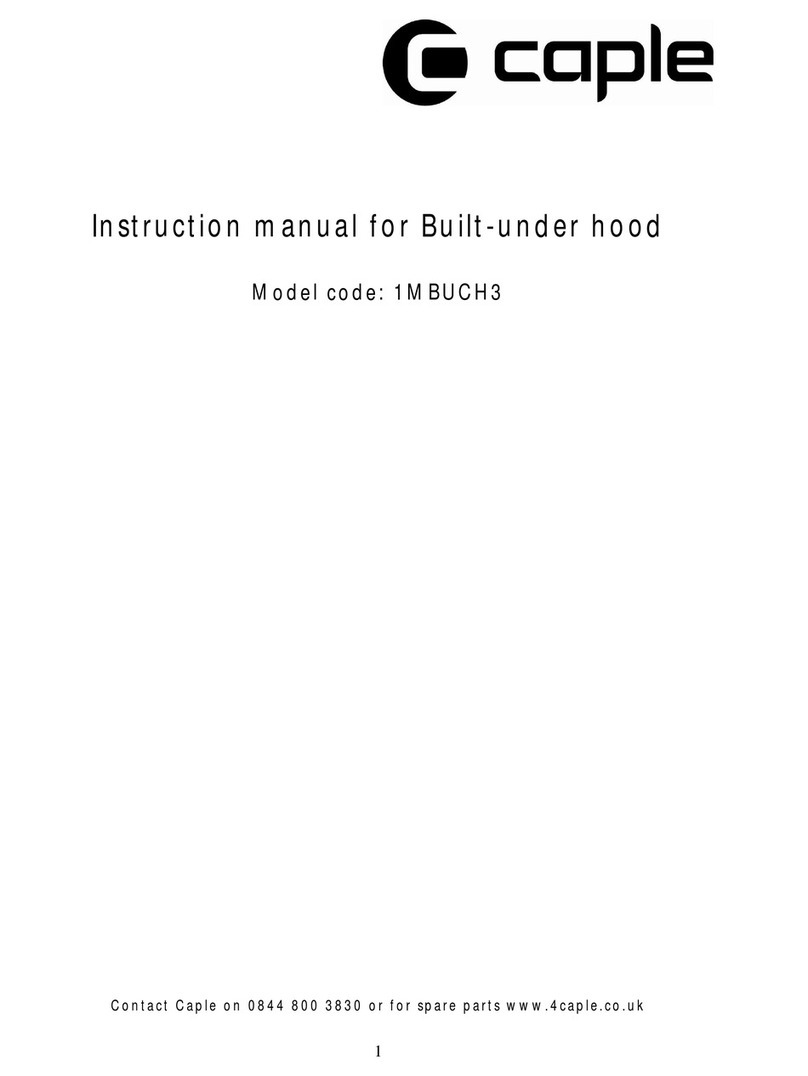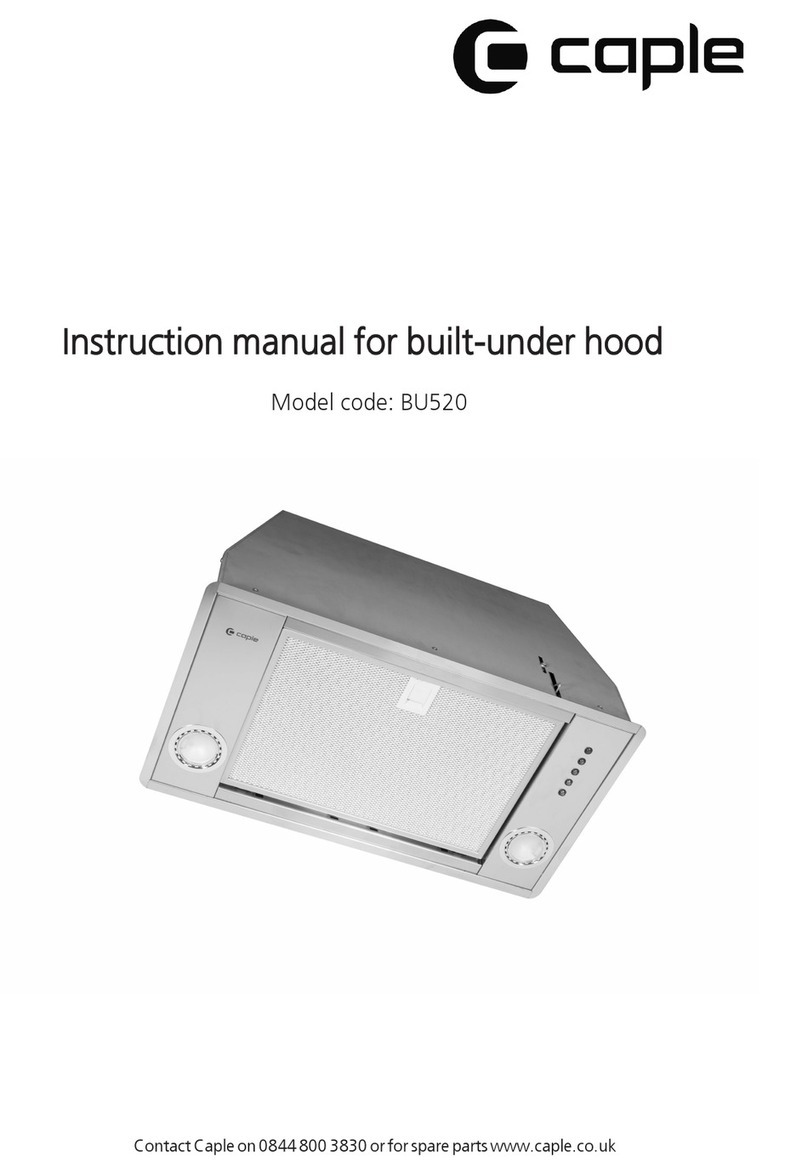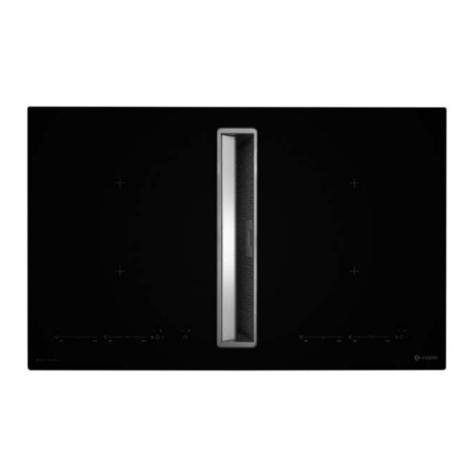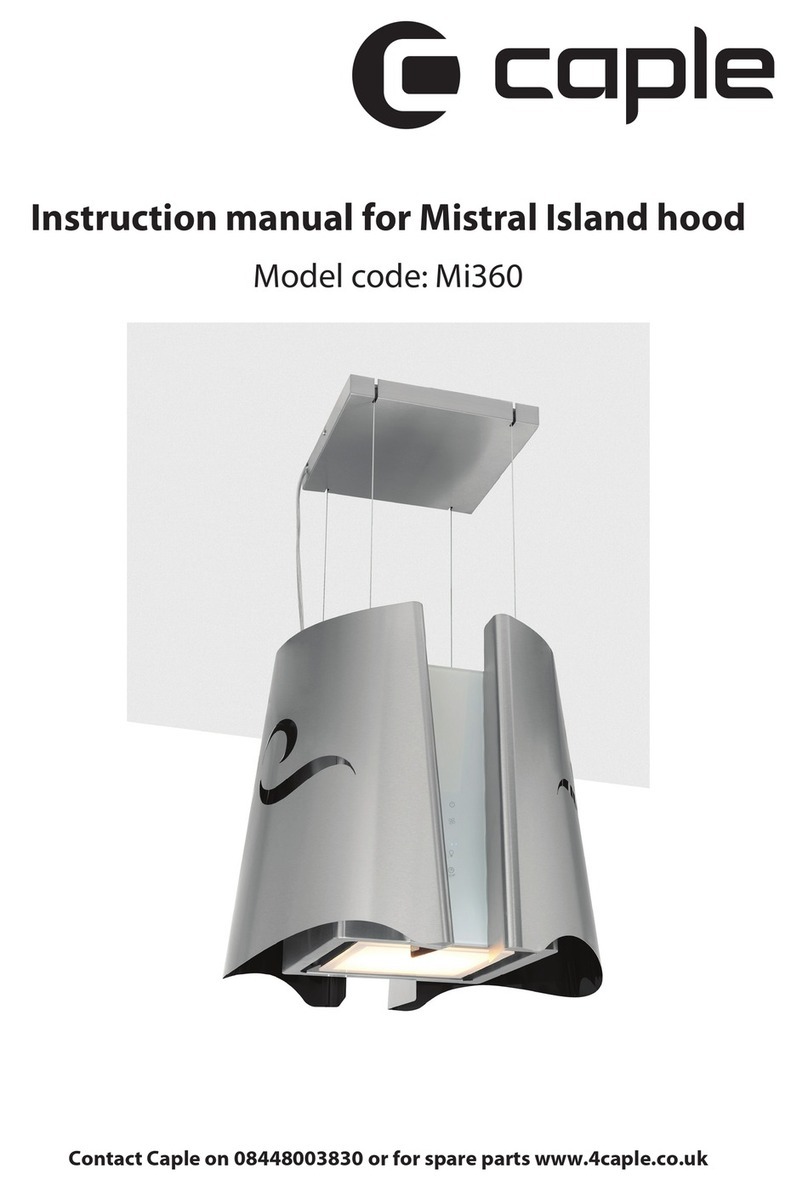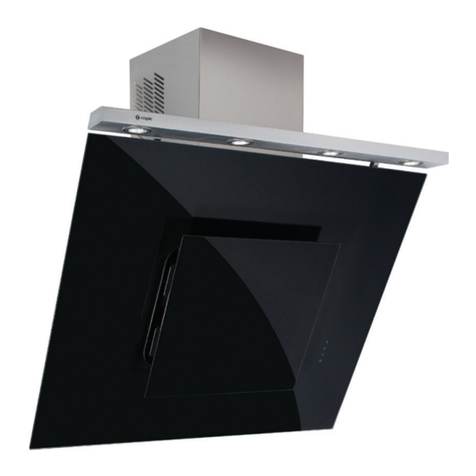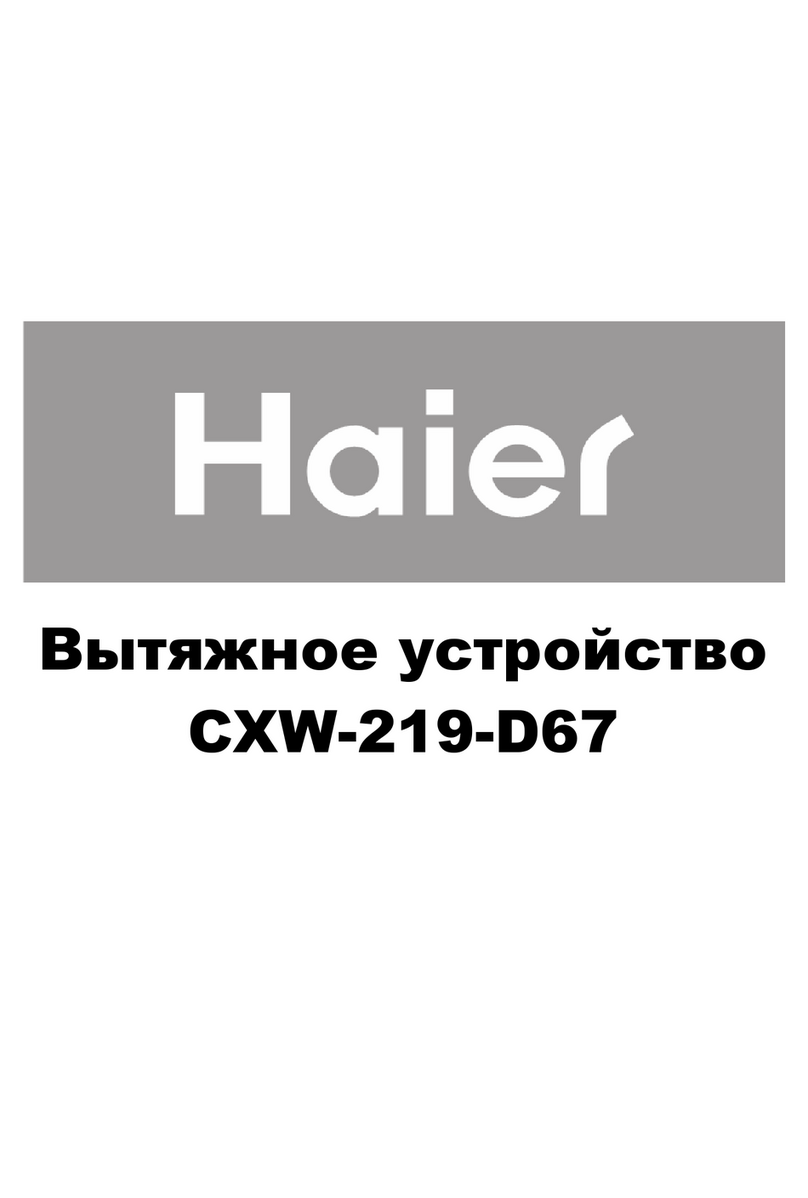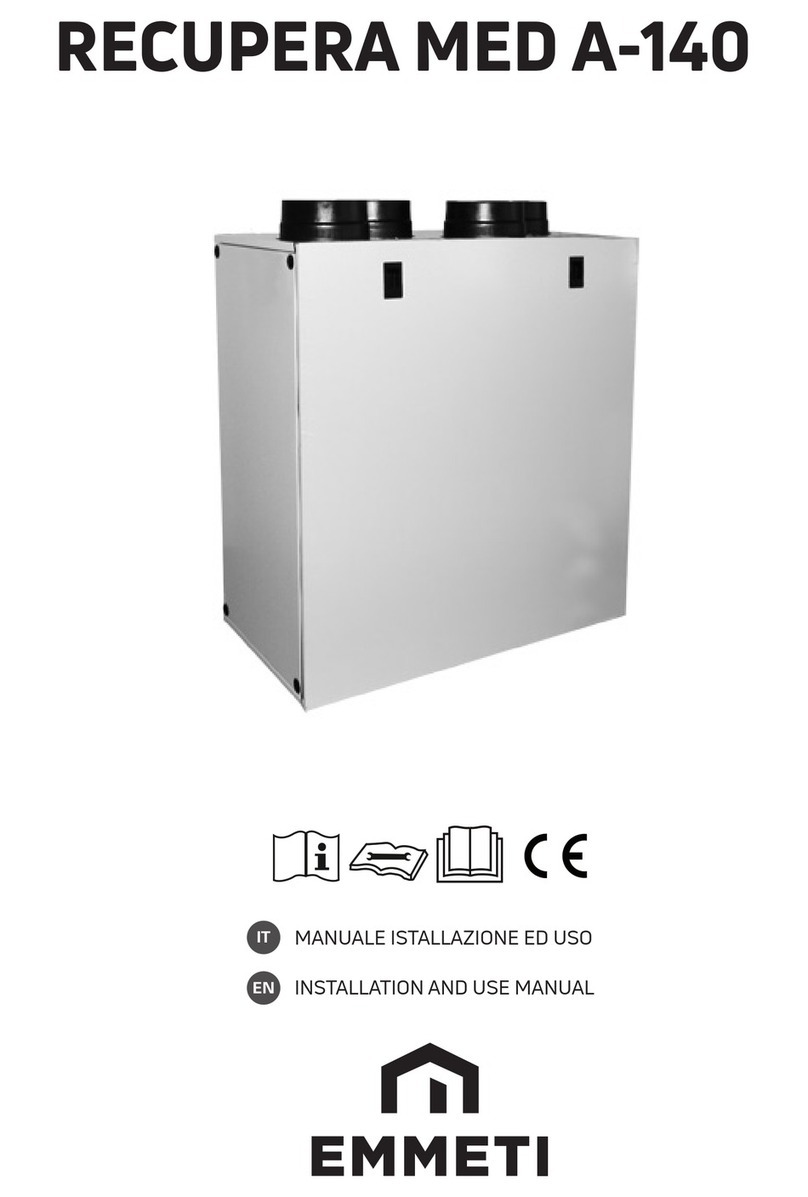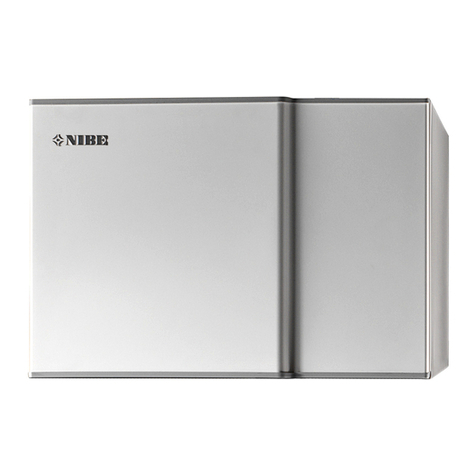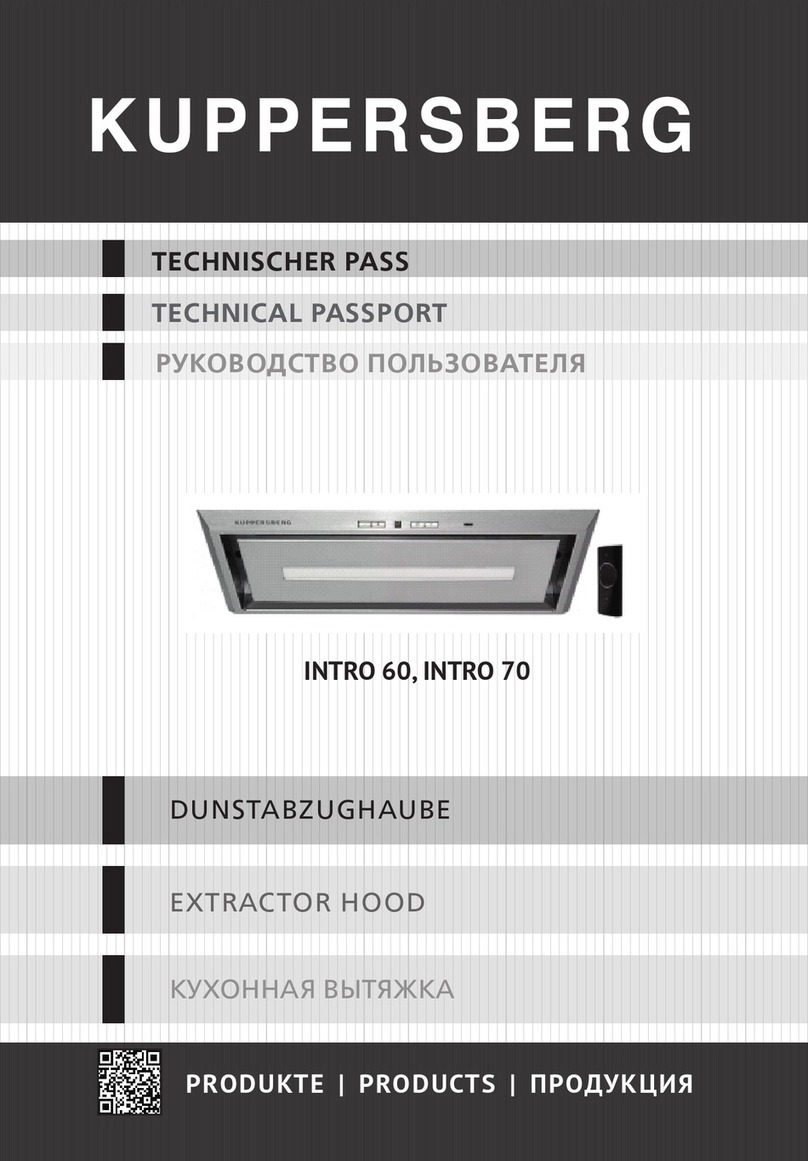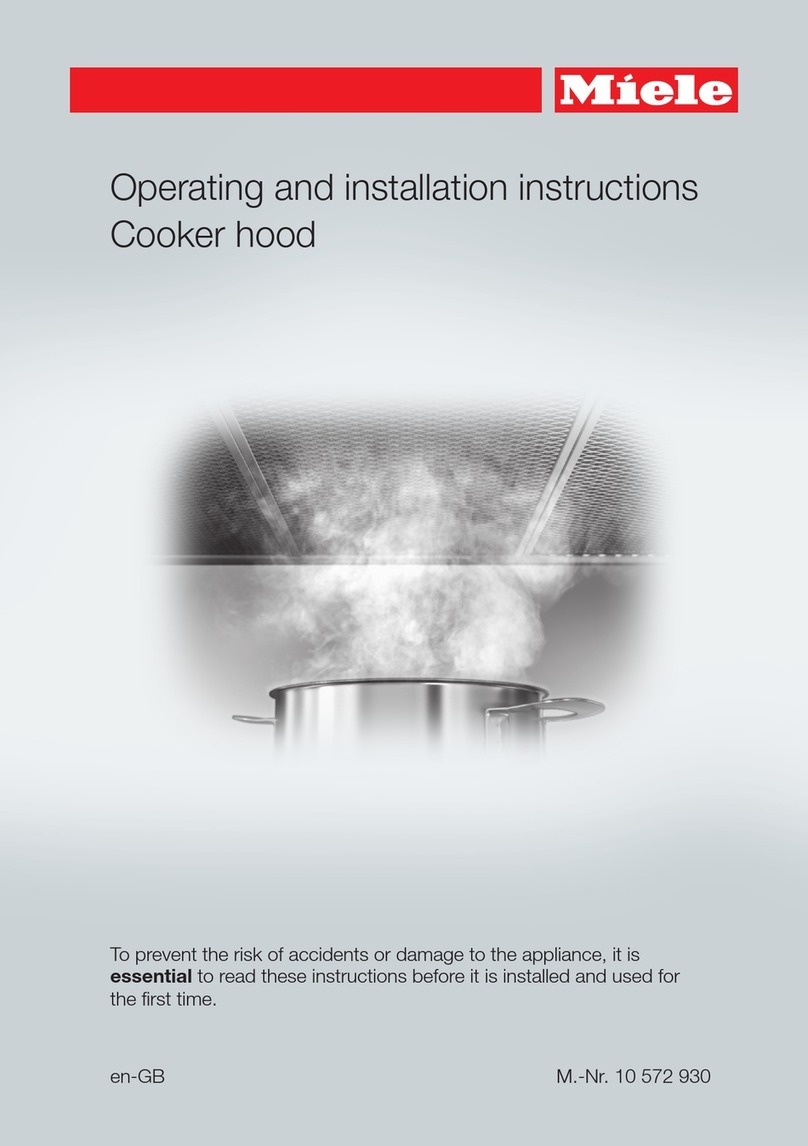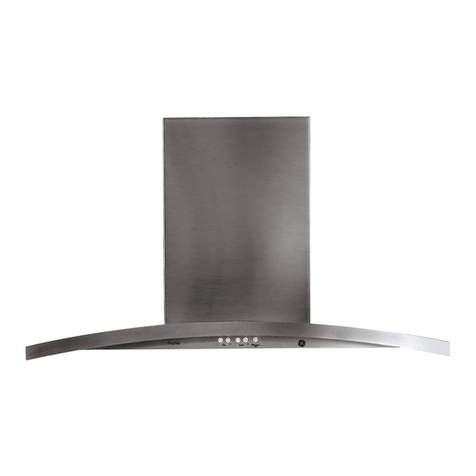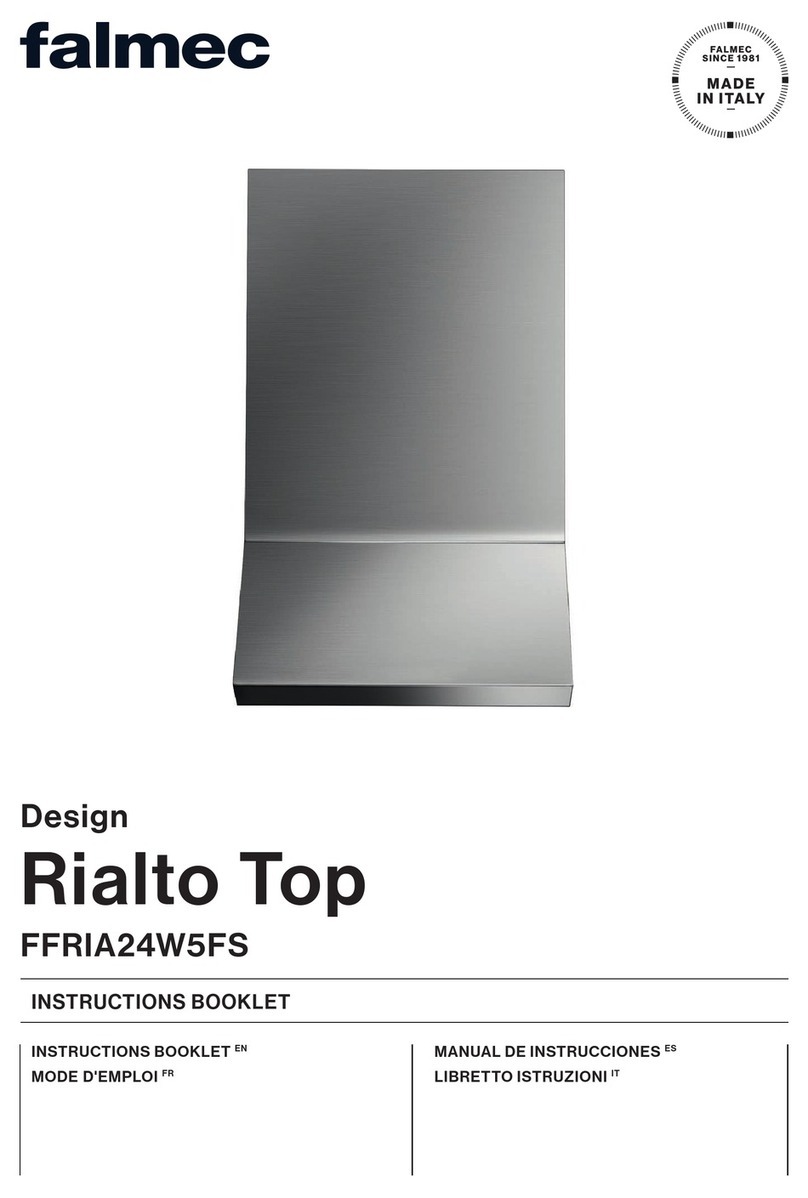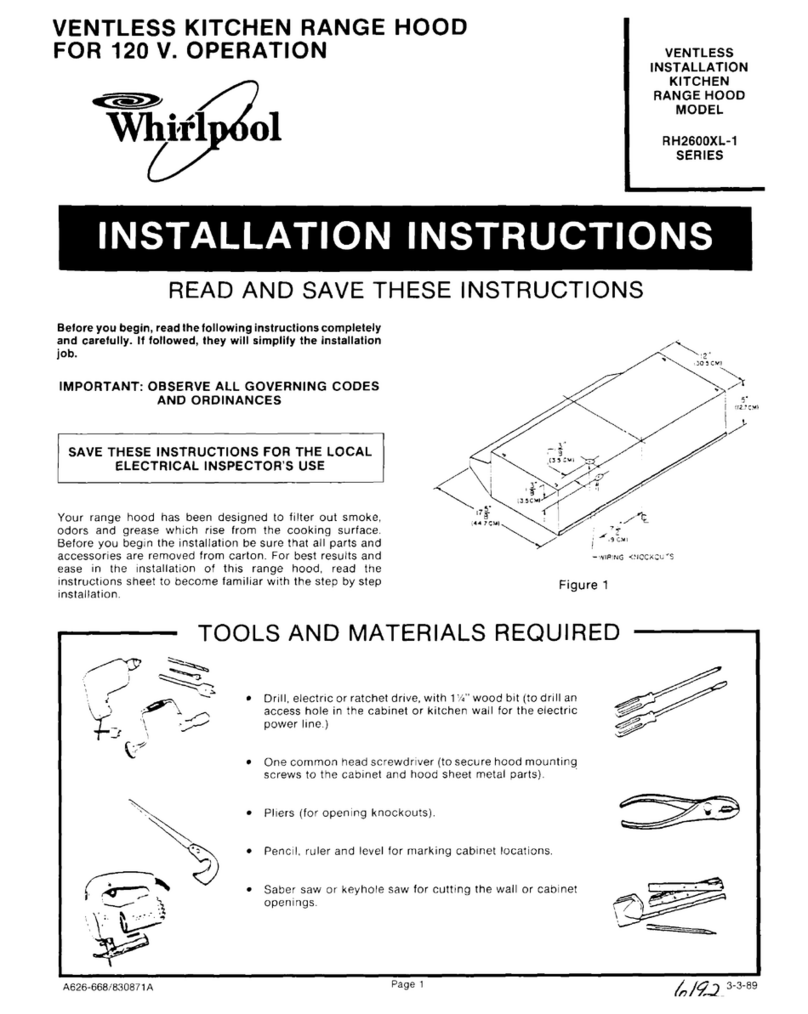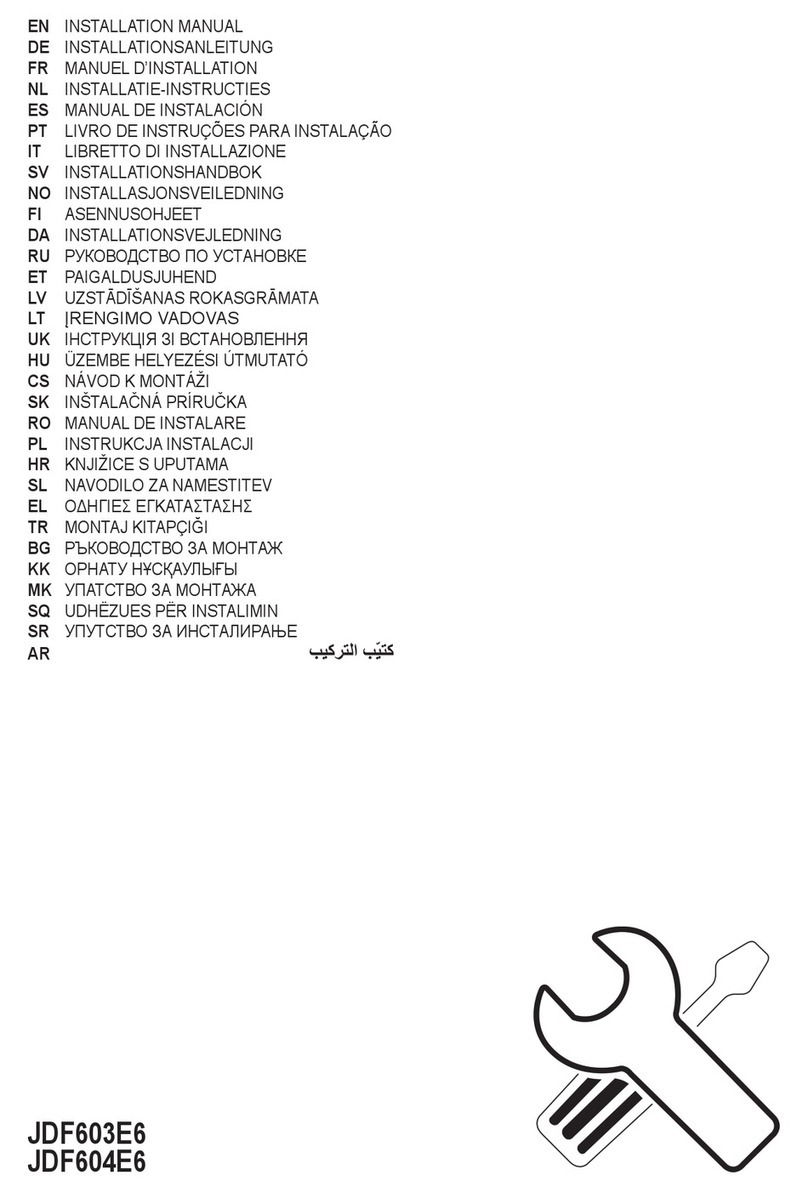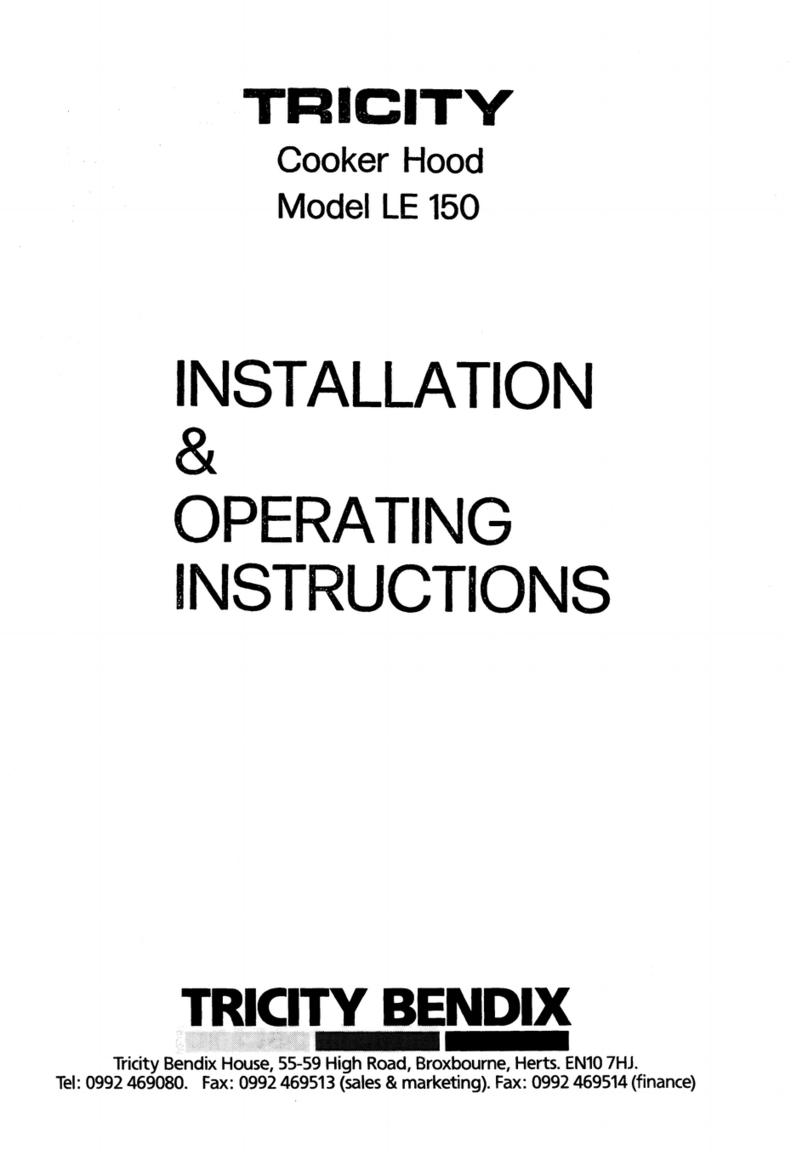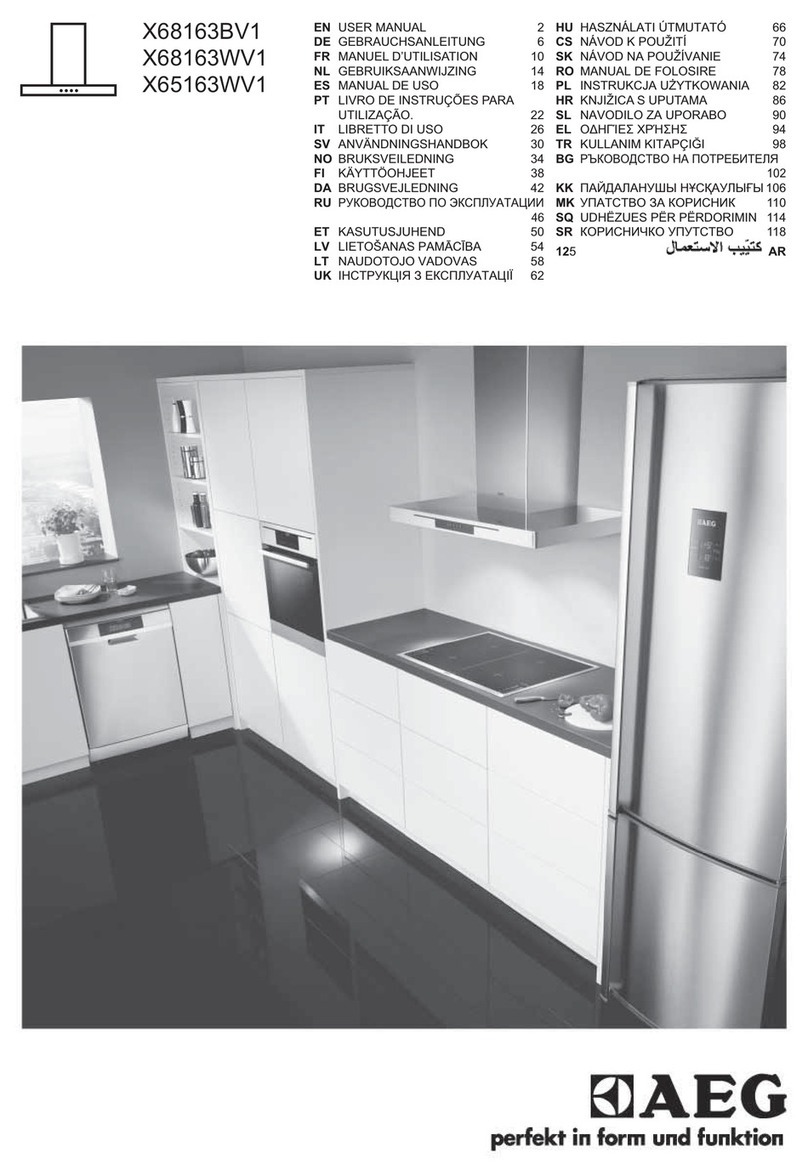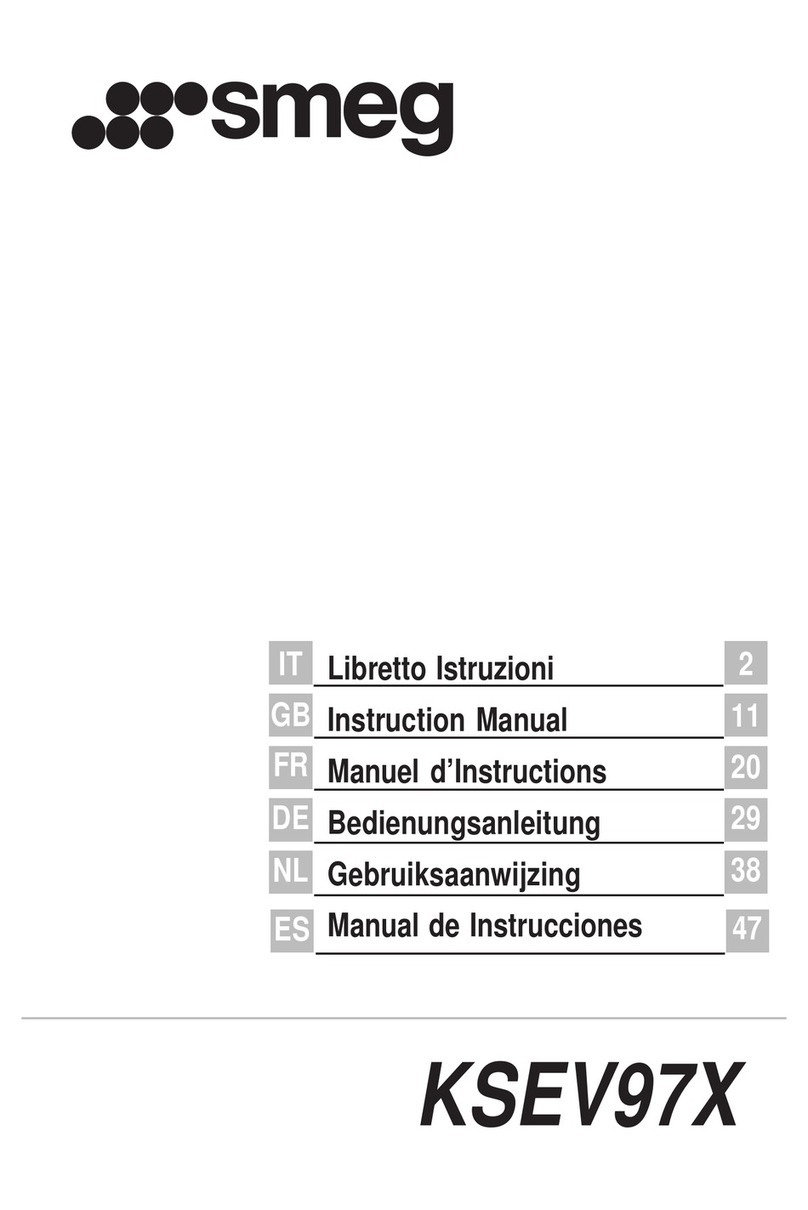
6 3LIOD2
EN
USE AND INSTALLING INSTRUCTIONS
Carefully read the following important information
regarding installation safety and maintenance.
Keep this information booklet accessible for further
consultations.
INSTALLING INSTRUCTIONS
This hood has been arranged to be installed above
a cooktop. It can be used in 2 ways:
•EXHAUST MODE: the kitcken vapours are puried
by the metal anti-grease lters and carried outside
through a ducting system.
•RECIRCULATING MODE: the kitcken vapours
are puried by the metal anti-grease lters and
an activated carbon lter (sold separately), then
conveyed back into the kitchen.
We suggest to have installation carried out
by qualied personnel, in compliance with all
the current regulations and in particular with
the ones concerning air exhaust and electrical
connection.
The manufacturer cannot be held liable for
damages caused by improper installation or
if it has not been carried out according to the
state-of-the-art.
SAFETY
The appliance must be installed at a minimum
height of 65 cm from an electric cooker stove, or
75 cm from gas or combined cooker stoves (Fig.
8). If a connection tube composed of two parts is
used, the upper part must be placed outside the
lower part. Do not connect the cooker hood exhaust
to the same conductor used to circulate hot air or for
evacuating fumes from other appliances generated
by other than an electrical source.
Take care when the cooker hood is operating
simultaneously with an open replace or burner
that depend on the air in the environment and are
supplied by other than electrical energy, as the
cooker hood removes the air from the environment
which a burner or replace need for combustion.
The negative pressure in the environment must
not exceed 4 Pa (4x10 –5 bar). Provide adequate
ventilation in the environment for a safe operation of
the cooker hood. Follow the local laws applicable for
external air evacuation.
INSTALLATION
Components > see Fig.4
Use screws and screw anchors suitable for wall
(e.g. reinforced cement, plasterboard) for the
mounting of the cooker hood.
Where screws and screw anchors are supplied
ensure that they are suitable for the type of wall
where the cooker hood is to be mounted.
EXHAUST MODE INSTALLATION
• Drill the holes A-B-C for wall-xing according
to indications quoted in (Fig.3). Make the holes
that correspond with the centre of the hob and
so that the lower part of the hood, which is to be
assembled afterwards, is arranged at least 75 cm
from the cook top (Fig.8).
• Afx the support clamp Z (Fig.4) to the wall via
the drill holes C.
• Afx the support clamp D to the wall via the 4 drill
holesA.Ifthekitckenisprovidedwithawall ducting
system x the support clamp as shown on Fig.5.
If the kitcken is provided with a ceiling ducting
system x the support clamp in correspondence
to the ducting system hole as shown on Fig.6.
• Insert the connection block Eon the support
clamp D and x it using 4 screws (Fig.7).
• Cut the exhaust tube Ffollowing the indication
provided in gure 8.
• Insert the exhaust tube Fon the opening of the
hood body.
• Hang the hood on the support clamp Z and x it
using 4 screws (Fig.9).
• Fasten the cooker hood to the wall using the
security drill holes B (Fig.10).
RECIRCULATING MODE INSTALLATION
• Drill the holes A-B for wall-xing according to
indications quoted in (Fig.3). Make the holes
that correspond with the centre of the hob and
so that the lower part of the hood, which is to be
assembled afterwards, is arranged at least 75 cm
from the cook top (Fig.8).
• Afx the support clamp Z (Fig.4) to the wall via
the drill holes C.
• Hang the hood on the support clamp Z and x it
using 4 screws (Fig.9).
• Fasten the cooker hood to the wall using the
security drill holes B (Fig.10).
ELECTRICAL CONNECTION
The appliance has been manufactured as a class II,
therefore no earth cable is necessary.
The connection to the mains is carried out as
follows:
BROWN = L line BLUE = N neutral
If not provided, connect a plug for the electrical load
indicated on the description label. Where a plug is
provided, the cooker hood must be installed in order
that the plug is easily accessible.
An omnipolar switch with a minimum aperture of
3 mm between contacts, in line with the electrical
load and local standards, must be placed between
the appliance and the network in the case of direct
connection to the electrical network.
OPERATING CHECKS
Check lights and motor start-up on all speeds.
EN
